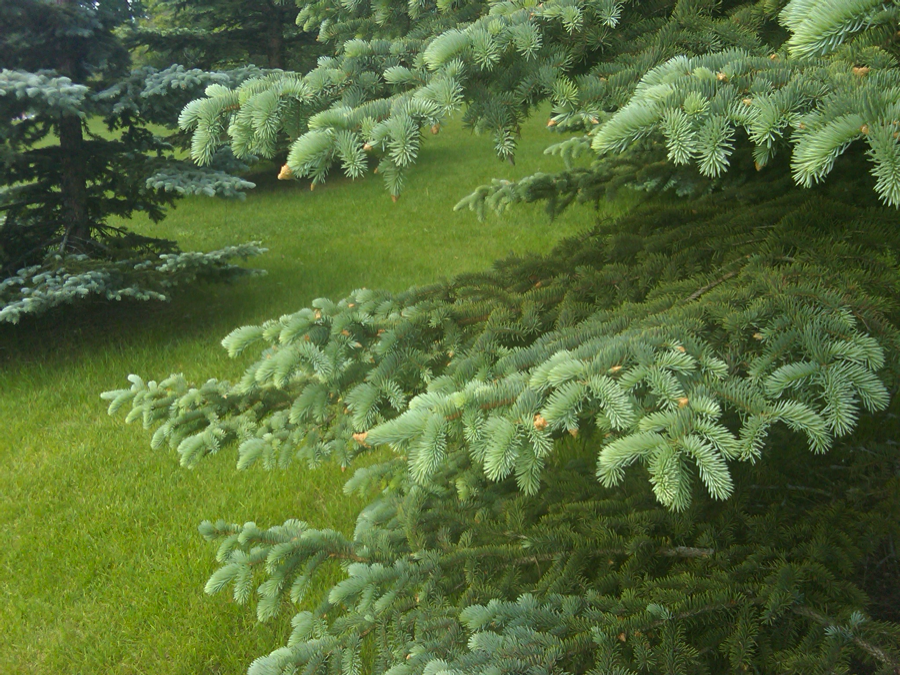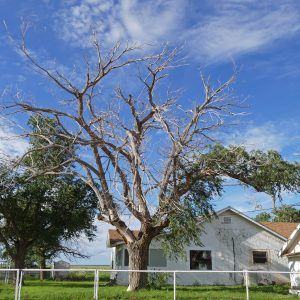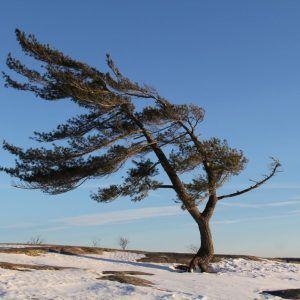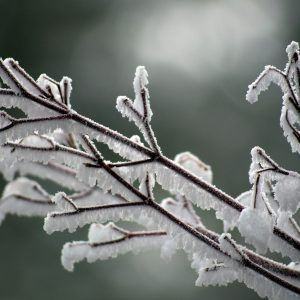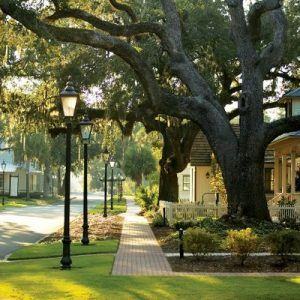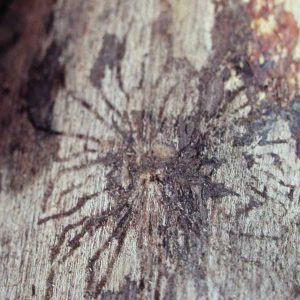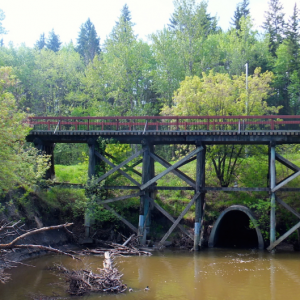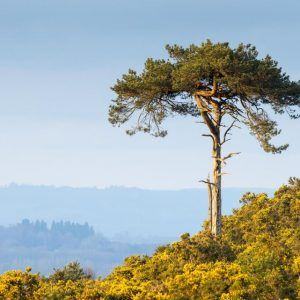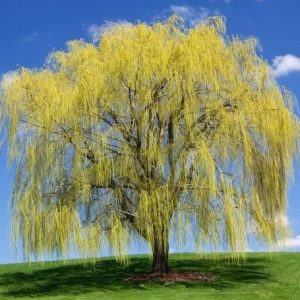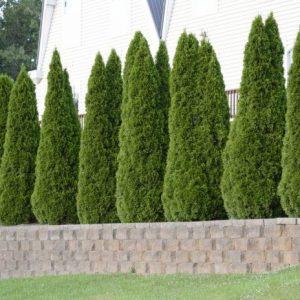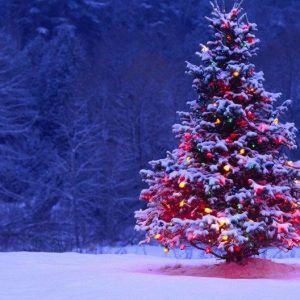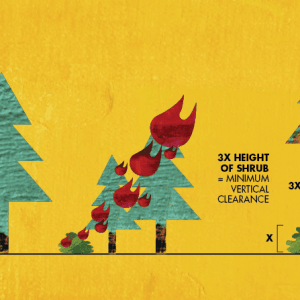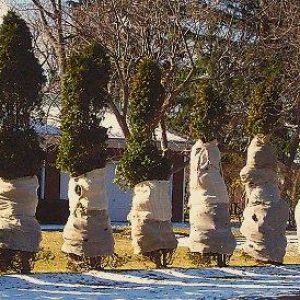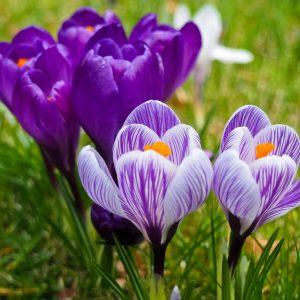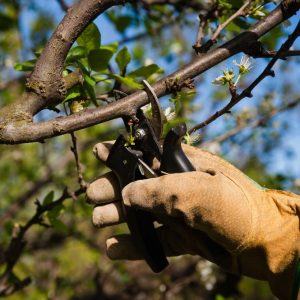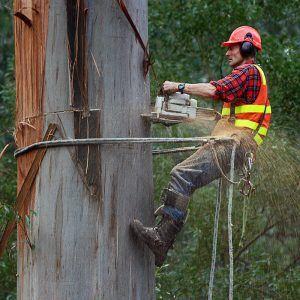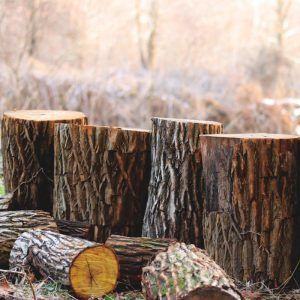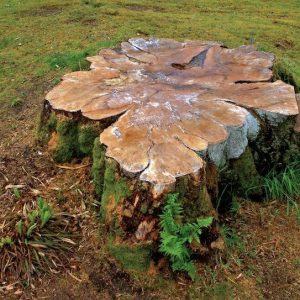Property owner, meet the Colorado Spruce. Colorado Spruce, meet your new homeowner! As part of our ongoing guide to tree care, we’ll now be introducing you to another one of Edmonton’s most common specimens and notable tree-about-town. We hope you two hit it off!
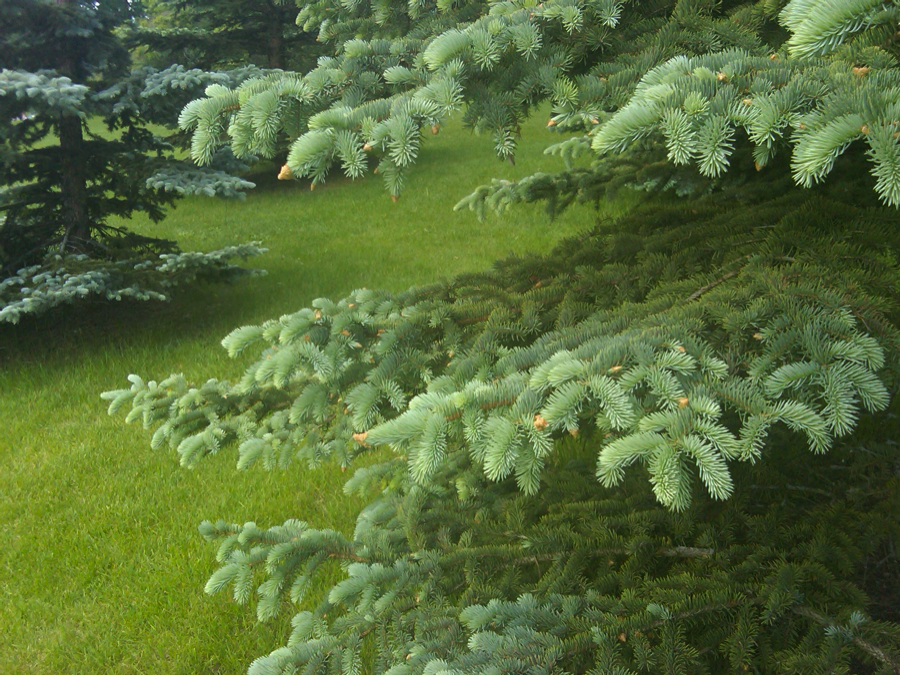
Also known as the blue spruce (or Colorado blue spruce), this pyramid-shaped, symmetrical evergreen can be recognized for its horizontal branches and long, rigid, sharp needles that attach directly to the branch. It cuts a tall, imposing figure in the rural landscape and makes a great addition to your backyard or garden as a dwarf species. Commonly found throughout western Canada and the US along stream banks, pastures, and crags, this spruce is frequently used as Christmas trees, as accent trees on properties, for shelterbelts on the farm, as shrub borders, and as thermal cover for birds and squirrels. Reaching heights of 60 and 80 feet with 6-foot spreads, they get their ‘blue’ nickname from their bluish tinge during the summer months, and make long-term additions to any area thanks to their long lives.
One major perk of owning a Colorado spruce is that it won’t need pruning in the same way as other trees (save in the case of double leaders). It’s not too choosy when it comes to soils: sand, clay, and clay loam suit it fine as long as it’s well drained and never flooded (this doesn’t mean dry — they enjoy moist, gravelly soil near streams and rivers, though they’ll still adapt to dry areas). Low salt levels and more acidic soil works best (aim for a pH between 6.0 and 7.5), as do patches that receive the full light of the sun, as the Colorado Spruce grows slowly in its youth and needs some encouragement. If you’ve just planted one, keep it watered in the first season, then give it a drink only in especially dry periods afterward (you can add some mulch so long as it’s not pushed right up against the trunk). This tree possesses a thin, grey bark in its early years that might need to be wrapped for protection. Once it grows its thicker, red-brown (think cinnamon) colour in maturity, it’ll be hardy through our fierce Edmonton winters (the bark can then also be used for fuels and posts).
As for pests, the red spider mite, the pine needle weevil, spruce gall aphid, and the yellowhead sawfly sometimes make their lives difficult. The weevils will eat the foliage, dropping the needles, but this won’t hurt the tree severely. Spider mites suck out fluids, creating yellow marks and loss of needles, and can be combatted with natural enemies (available from garden supply stores) or with certain plant-based oils. Weevils are fought only through pruning — no other solutions exist. When it comes to ailments, you could find yourself battling Cytospora cankers, pine needle scale, and needlecast — all diseases that cause discoloration, fungal growth, and needle drop. Fight these with proper use of mulch and certain fungicides.
If you have a pest or disease problem with your own spruce, and you need some friendly advice, please let us know! We can of course help with all the pruning, planting, transplanting, and removal needs for the new (or very old) Colorado spruce in your life. We’re here to ensure a green, healthy Edmonton, one spruce at a time.


